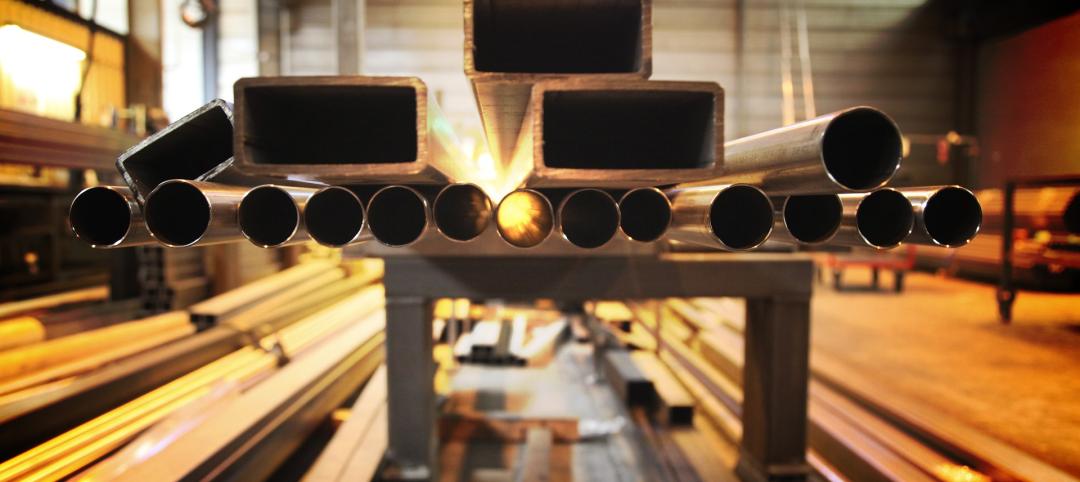Building Teams will find more ways to enhance water efficiency indoors than ever before. These include dishwashers with reduced water consumption and low-flow toilets with improved circulation design. These new low-flow toilets come with pressure-assisted and vacuum-assisted flush fixtures, which don’t rely solely on gravity and flow for movement of waste, says James Del Monaco, Sustainability Director at P2S Engineering.
Ultra-low-flow fixtures and waterless urinals are also being adopted. One Swedish maker has created a line of toilets that use 0.16 gallons of water per flush. A second fixture design uses half that, only 0.08 gallons per flush, with a vacuum assist. Standard U.S. low-flow models are calibrated for 1.6 gallons per use.
“In bathrooms, other high-efficiency plumbing fixtures should be used,” says Jorge Mastropietro, AIA, Principal of Jorge Mastropietro Architects Atelier. “This includes water-efficient shower heads, and faucets with motion sensors or timed operation.” The architect adds that even soap selection in a commercial restroom can impact water use: Studies show that handwashers using foaming hand soaps use about 16% less water than those using liquid soaps, because less water is required to rinse it off.
Mastropietro encourages his multifamily and institutional clients to buy high-efficiency washers and dryers, which may have a slight price premium. “For kitchens and laundry facilities, the use of Energy Star-rated equipment will result in water savings,” says P2S’s Del Monaco. “Laundry facilities can also use ozone systems to reduce water and energy consumption.”
Project teams with leadership from mechanical engineers and plumbing engineers have been successfully incorporating water reuse concepts in their restrooms, foodservice areas, and other places where water quality is ideal for graywater applications. “Graywater can be recycled for toilet flushing and irrigation, provided that the user does not drain toxic ingredients into the system,” says Mastropietro. According to the engineer Del Monaco of P2S, “There are multiple factors to consider when decided if a graywater system can be utilized, such as estimating the amount of available graywater to be generated, the space and costs associated with storing and treating graywater, as well as soil quality, landscaping, and site topography.”
Both professionals recommend the use of life cycle cost analysis (LCA) should be performed to identify the feasibility of incorporating graywater technologies. “This should include an understanding of the maintenance and intangibles associated with the use of such a system,” adds Del Monaco. Recently a number of fixture manufacturers have introduced small-scale water reuse products -- often called graywater diverters -- and several companies offer packaged systems designed for two basic applications: Irrigation only vs. graywater reused for indoor toilet flush, laundry, fire protection, building cleaning, car and truck washes and landscape irrigation. For irrigation, the system comprises essentially diverted water sources that are mechanically filtered and moved by gravity or pumped to subsurface (underground) irrigation points. For the multiple-use systems, the collected water also must be buffered, treated and disinfected to meet building codes and health regulations.
“Graywater reuse for interior plumbing is not a cheap strategy and should be considered where it does not place undue burden on project costs,” says Skolnick’s Gross.
In addition to domestic water recapture, many mechanical systems and manufacturing processes that use water are ripe for recycling, says Breeze Glazer, LEED AP BD+C, Senior Associate and Sustainable Design Leader in Perkins+Will’s New York officer, who has worked on dozens of LEED Platinum and LEED Gold projects. “For example, condensate capture is another strategy to be considered,” he says. “It’s naturally produced when air passes over the cooling coils of any HVAC system. The typical practice is to drain the water into the waste water system and sent for municipal treatment along with other effluents. However it is a relatively high-quality water source that can be captured in a cistern and used for nonpotable water needs in the building such as landscape irrigation or cooling tower makeup without substantial alterations to the plumbing system.”
Related Stories
Mechanical Systems | Jun 16, 2023
Cogeneration: An efficient, reliable, sustainable alternative to traditional power generation
Cogeneration is more efficient than traditional power generation, reduces carbon emissions, has high returns on the initial investment, improves reliability, and offers a platform for additional renewable resources and energy storage for a facility. But what is cogeneration? And is it suitable for all facilities?
Multifamily Housing | Jun 15, 2023
Alliance of Pittsburgh building owners slashes carbon emissions by 45%
The Pittsburgh 2030 District, an alliance of property owners in the Pittsburgh area, says that it has reduced carbon emissions by 44.8% below baseline. Begun in 2012 under the guidance of the Green Building Alliance (GBA), the Pittsburgh 2030 District encompasses more than 86 million sf of space within 556 buildings.
Resiliency | Jun 14, 2023
HUD offers $4.8 billion in funding for green and resilient building retrofit projects
The Department of Housing and Urban Development (HUD) recently released guidelines for its Green and Resilient Retrofit Program (GRRP) that has $4.8 billion for funding green projects.
Steel Buildings | May 19, 2023
New manufacturing processes can make steel construction a greener option and add U.S. jobs
“Green steel” that is manufactured using hydrogen generated with renewable energy makes its use as a building material more feasible for environmentally conscious designers and clients. Sustainable manufacturing processes, which are economically viable in the U.S., could also revive steelmaking in the country as the metal becomes more attractive for green building.
Office Buildings | May 15, 2023
Sixteen-story office tower will use 40% less energy than an average NYC office building
This month marks the completion of a new 16-story office tower that is being promoted as New York City’s most sustainable office structure. That boast is backed by an innovative HVAC system that features geothermal wells, dedicated outdoor air system (DOAS) units, radiant heating and cooling, and a sophisticated control system to ensure that the elements work optimally together.
Headquarters | May 9, 2023
New Wells Fargo development in Texas will be bank’s first net-positive campus
A new Wells Fargo development in the Dallas metroplex will be the national bank’s first net-positive campus, expected to generate more energy than it uses. The 850,000-sf project on 22 acres will generate power from solar panels and provide electric vehicle charging stations.
Senior Living Design | May 8, 2023
Seattle senior living community aims to be world’s first to achieve Living Building Challenge designation
Aegis Living Lake Union in Seattle is the world’s first assisted living community designed to meet the rigorous Living Building Challenge certification. Completed in 2022, the Ankrom Moisan-designed, 70,000 sf-building is fully electrified. All commercial dryers, domestic hot water, and kitchen equipment are powered by electricity in lieu of gas, which reduces the facility’s carbon footprint.
Mass Timber | May 1, 2023
SOM designs mass timber climate solutions center on Governors Island, anchored by Stony Brook University
Governors Island in New York Harbor will be home to a new climate-solutions center called The New York Climate Exchange. Designed by Skidmore, Owings & Merrill (SOM), The Exchange will develop and deploy solutions to the global climate crisis while also acting as a regional hub for the green economy. New York’s Stony Brook University will serve as the center’s anchor institution.
Concrete Technology | Apr 24, 2023
A housing complex outside Paris is touted as the world’s first fully recycled concrete building
Outside Paris, Holcim, a Swiss-based provider of innovative and sustainable building solutions, and Seqens, a social housing provider in France, are partnering to build Recygénie—a 220-unit housing complex, including 70 social housing units. Holcim is calling the project the world’s first fully recycled concrete building.
Green | Apr 21, 2023
Boston to adopt stringent climate-friendly building code
Boston will soon adopt a new stringent green state building code that aims to significantly reduce carbon emissions in new construction and major renovations.
















